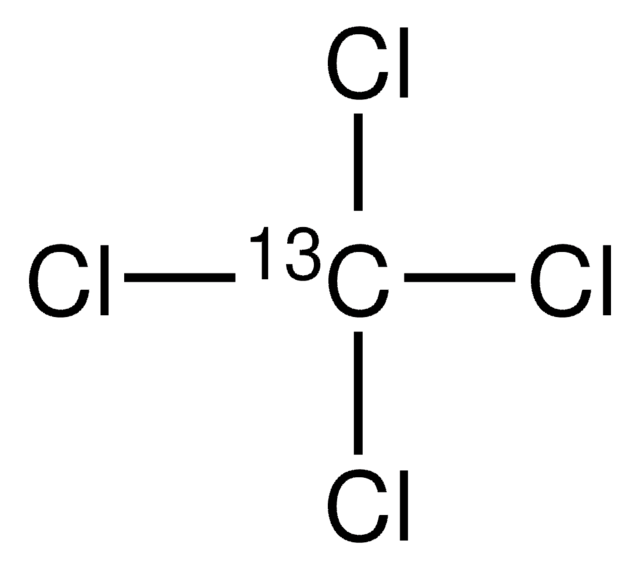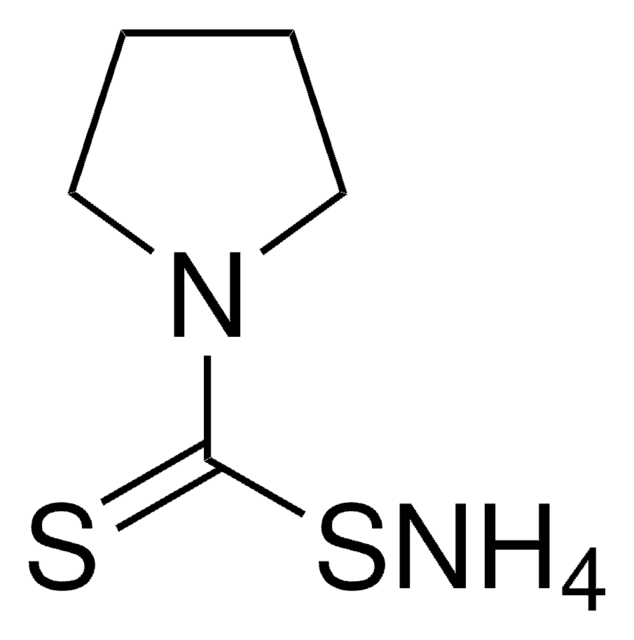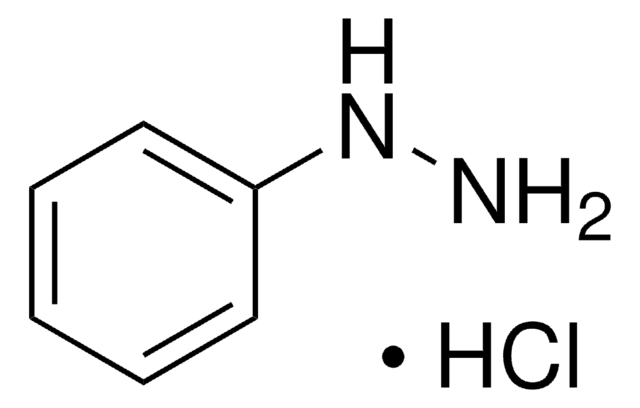319961
Carbon tetrachloride
reagent grade, 99.9%
Sinónimos:
Tetrachloromethane
About This Item
Productos recomendados
grade
reagent grade
Quality Level
vapor density
5.32 (vs air)
vapor pressure
143 mmHg ( 30 °C)
91 mmHg ( 20 °C)
assay
99.9%
form
liquid
refractive index
n20/D 1.460 (lit.)
bp
76-77 °C (lit.)
mp
−23 °C (lit.)
density
1.594 g/mL at 25 °C (lit.)
SMILES string
ClC(Cl)(Cl)Cl
InChI
1S/CCl4/c2-1(3,4)5
InChI key
VZGDMQKNWNREIO-UHFFFAOYSA-N
¿Está buscando productos similares? Visita Guía de comparación de productos
General description
Application
- A precursor to synthesize high-surface-area mesoporous carbon material by a self-templating method in the presence of sodium-potassium alloy (NaK) as a reducing agent.
- A reactant to synthesize 1,2-disubstituted cyclopentanes via Cu-catalyzed ring-closing Kharasch addition reaction with 1,6-dienes.
- A solvent as well as a reactant to prepare diphenyl carbonate from phenol and carbon dioxide in the presence of ZnCl2 as a catalyst.
signalword
Danger
Hazard Classifications
Acute Tox. 3 Dermal - Acute Tox. 3 Inhalation - Acute Tox. 3 Oral - Aquatic Chronic 3 - Carc. 2 - Ozone 1 - Skin Sens. 1B - STOT RE 1 Inhalation
target_organs
Liver,Kidney
Storage Class
6.1B - Non-combustible acute toxic Cat. 1 and 2 / very toxic hazardous materials
wgk_germany
WGK 3
flash_point_f
Not applicable
flash_point_c
Not applicable
Certificados de análisis (COA)
Busque Certificados de análisis (COA) introduciendo el número de lote del producto. Los números de lote se encuentran en la etiqueta del producto después de las palabras «Lot» o «Batch»
¿Ya tiene este producto?
Encuentre la documentación para los productos que ha comprado recientemente en la Biblioteca de documentos.
Nuestro equipo de científicos tiene experiencia en todas las áreas de investigación: Ciencias de la vida, Ciencia de los materiales, Síntesis química, Cromatografía, Analítica y muchas otras.
Póngase en contacto con el Servicio técnico









